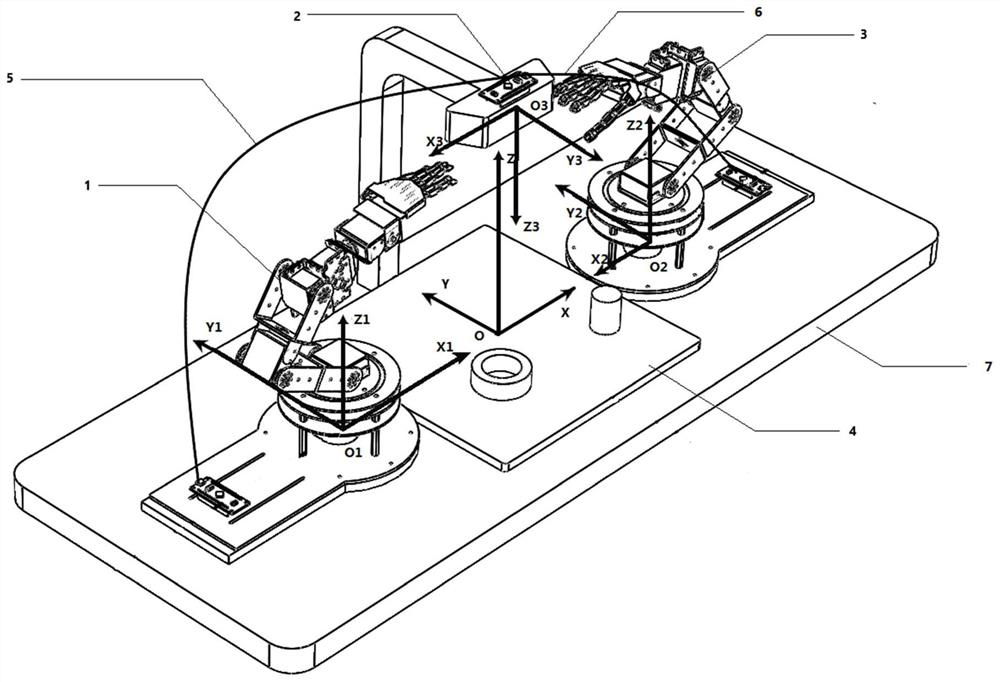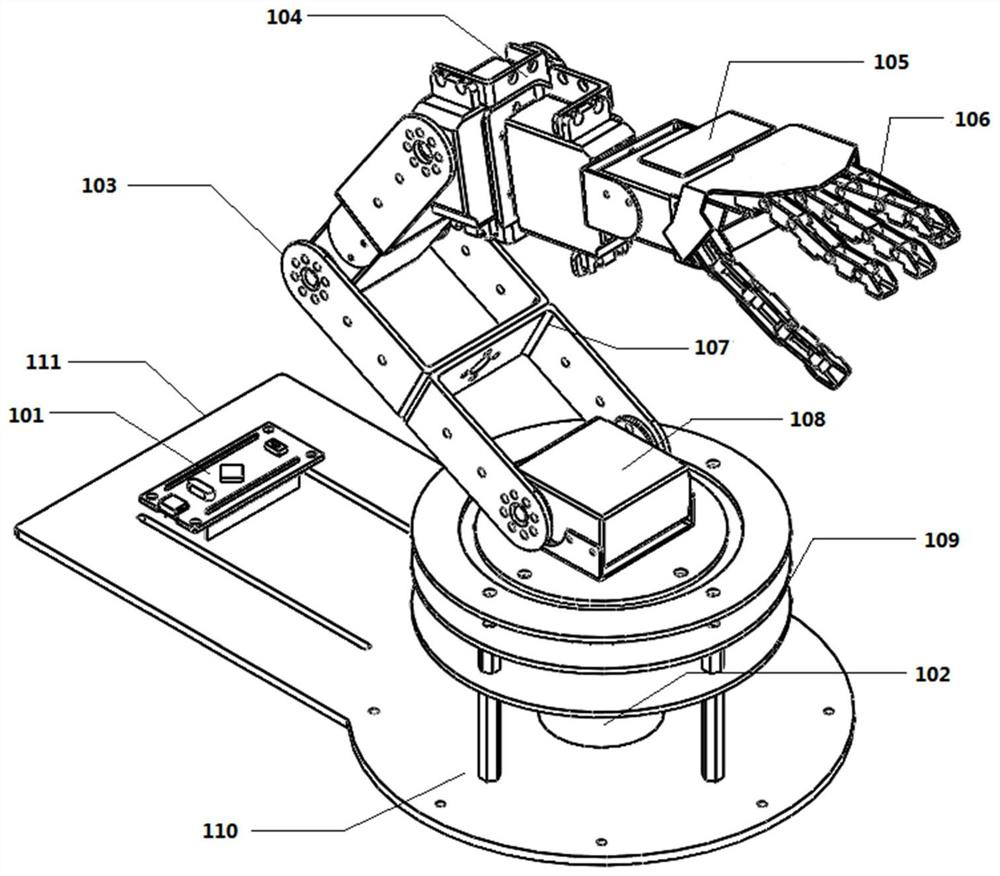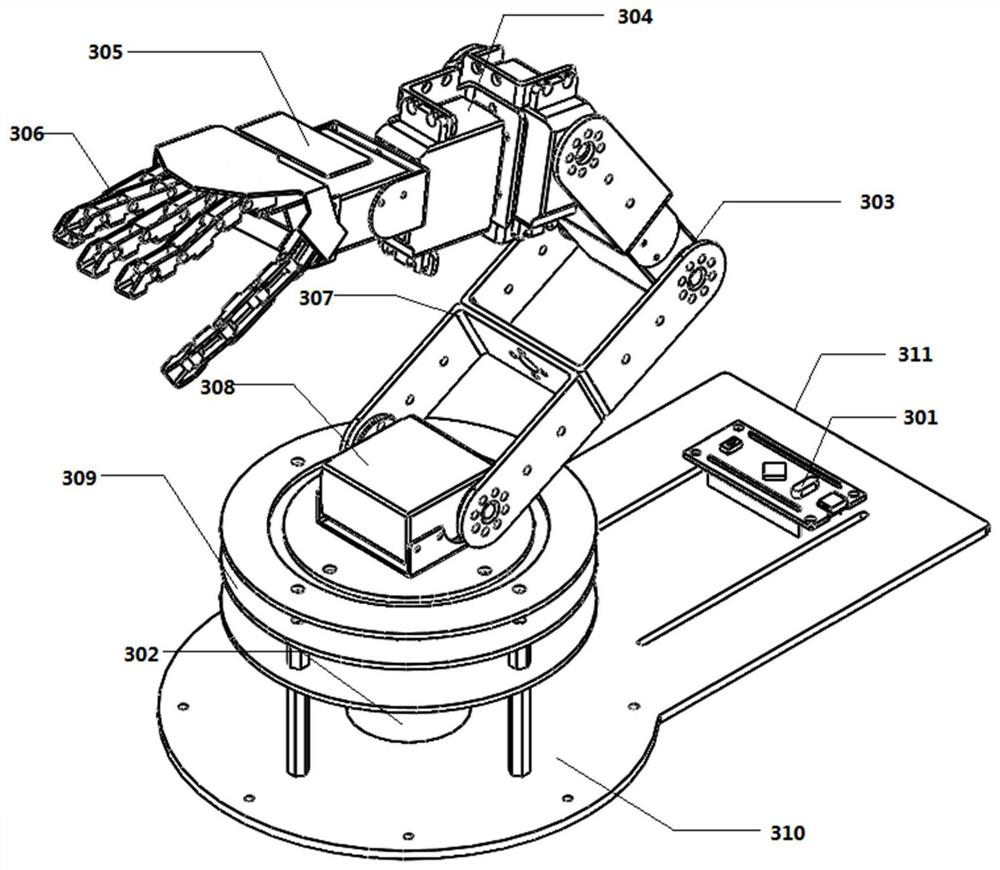Double-arm collaborative robot system based on binocular vision and control method
A robot system and binocular vision technology, applied in the direction of program control manipulators, claw arms, manipulators, etc., can solve problems such as falling into local optimum, registration failure, failure to reach, etc., to improve operation accuracy, improve automation, Inexpensive effect
- Summary
- Abstract
- Description
- Claims
- Application Information
AI Technical Summary
Problems solved by technology
Method used
Image
Examples
Embodiment Construction
[0064] The present invention is described in further detail now in conjunction with accompanying drawing.
[0065] It should be noted that terms such as "upper", "lower", "left", "right", "front", and "rear" quoted in the invention are only for clarity of description, not for Limiting the practicable scope of the present invention, and the change or adjustment of the relative relationship shall also be regarded as the practicable scope of the present invention without substantive changes in the technical content.
[0066] like figure 1 As shown, in one of the embodiments of the present invention, a dual-arm collaborative robot system based on binocular vision is proposed, including a left mechanical arm device 1, a right mechanical arm device 3, a binocular detection device 2, and a working area device 4. The signal line 5, the signal line 6 and the chassis device 7. The left manipulator device 1 and the right manipulator device 3 are placed at both ends of the work area devi...
PUM
 Login to View More
Login to View More Abstract
Description
Claims
Application Information
 Login to View More
Login to View More - R&D
- Intellectual Property
- Life Sciences
- Materials
- Tech Scout
- Unparalleled Data Quality
- Higher Quality Content
- 60% Fewer Hallucinations
Browse by: Latest US Patents, China's latest patents, Technical Efficacy Thesaurus, Application Domain, Technology Topic, Popular Technical Reports.
© 2025 PatSnap. All rights reserved.Legal|Privacy policy|Modern Slavery Act Transparency Statement|Sitemap|About US| Contact US: help@patsnap.com



